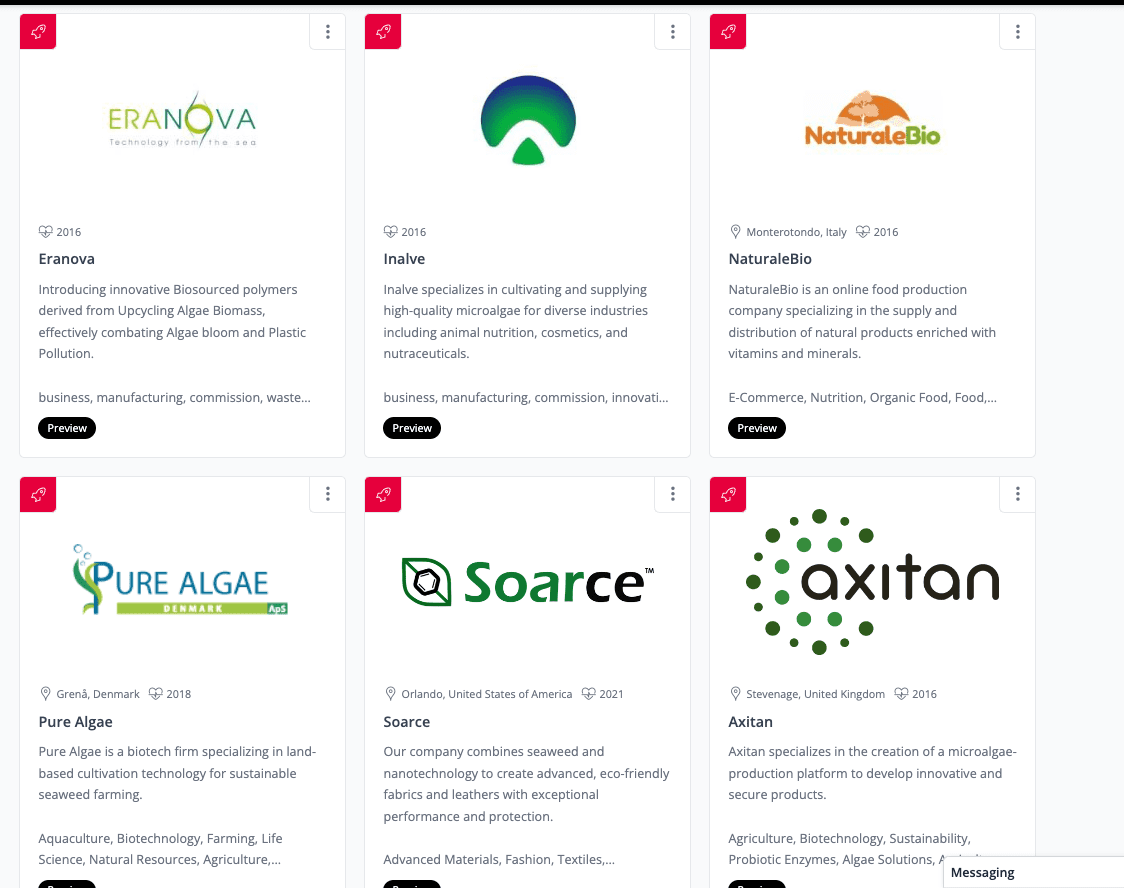Microalgae, the tiny powerhouses of nature, hold the key to a greener and more sustainable future. This article therefore dives into the world of microalgae, investigating their remarkable potential to change multiple industries, like the food-, medicine- and cosmetic industry. Given their ability to bind carbon dioxide, produce valuable bioactive compounds, and provide a renewable resource for a myriad of applications, microalgae disrupt the market and lead the charge towards a more sustainable planet.
Introduction
Microalgae are tiny, single-celled organisms that can photosynthesize or turn light and carbon dioxide into organic matter. They sometimes grow in open ponds, closed photobioreactors, or other culture systems. Also, they are sometimes found in several aquatic environments, including water, marine, and brackish water. Microalgae play a crucial role in marine ecosystems, through the provision of oxygen and serving as the base of the marine food chain. However, in recent years, researchers have made use of the power of micro algae to address global challenges and drive sustainable innovations.
Relevance of Microalgae
The importance of microalgae extends far beyond their size. Microalgae offer promise by capturing CO2 and producing valuable compounds, and thus benefits the environment and multiple industries. Microalgae have a high photosynthetic rate that allows for more efficient bio-fixing of CO2 compared to terrestrial plants. In fact, according to some estimates, microalgae have the capacity to sequester up to 10 times more carbon dioxide per acre than traditional plants. Hence, this makes them a potent weapon against climate change. Moreover, projections indicate that the global market for these little organisms will attain a value of $3.08 billion by 2030. This reflects the growing enthusiasm for their commercial applications and their potential to introduce sustainable alternatives and thus, transform various industries.
Benefits of Microalgae
- Carbon Sequestration: Microalgae actively absorb carbon dioxide during photosynthesis, helping combat climate change by reducing greenhouse gas emissions.
- Renewable Biofuels: Certain microalgae species support the production of biofuels like biodiesel. Therefore, they provide a sustainable alternative to fossil fuels.
- High Nutritional Value: Furthermore, Microalgae are rich in essential nutrients like proteins, vitamins, and omega-3 fatty acids. They offer a sustainable and nutrient-dense food source for humans and animals.
- Pharmaceuticals and Nutraceuticals: Microalgae produce valuable bioactive compounds that have applications in medicine and nutraceuticals, potentially leading to the development of novel treatments and health supplements.
- Wastewater Treatment: Microalgae effectively treat wastewater, removing pollutants and nutrients, while producing biomass that is used for various applications. Microalgae have the potential to consume or remove 43.5 and 5.5 mg/L of nitrogen and phosphorous respectively from wastewater.
Risks Associated with Microalgae
Microalgae hold tremendous potential, but also face certain challenges.
- Scale-Up of Production: One significant challenge is to scale up the production from labs to industrial operations. More precisely, the transformation from small-scale cultivation to large-scale production goes hand in hand with hurdles in engineering, logistics, and other operational challenges. Therefore, factors such as the maintenance of optimal growth conditions, contamination, and designing efficient systems need consideration.
- Cost Effectivity: Achieving cost reductions in the production remains a hurdle. Thus, high production costs, resulting from energy intense processes, nutrient requirements, cultivation systems, and harvesting methods, can limit the economic viability of microalgae-based products.
- Strain Selection and Optimization: Finally, finding and optimizing the right strains of microalgae for specific applications is crucial. Strain selection involves finding species with valuable traits like high lipid content for biofuel production or high protein content for food and feed applications. Additionally, genetic engineering to enhance desired traits in the organism strains is an ongoing area of research but poses regulatory and ethical considerations.
Therefore, to overcome these hurdles, ongoing research and technological improvements are required. Innovations in cultivation methods, strain engineering, and better bioreactor systems can drive down production costs and realize economies of scale.
Main Startups in the Field
Numerous organizations and research institutions are actively involved in exploring the potential of microalgae. Companies like AlgaeCytes, Provectus Algae, and Cyanotech are leading the way in microalgae-based products and technologies. Various research organizations and governmental institutions like the European Union are also conducting research to unlock the full potential of microalgae.

Explore all Key Player:
Example Case Study
AlgaeCo, a microalgae biotech company, successfully developed a system for producing omega-3 fatty acids from microalgae. By using photobioreactors and optimized cultivation techniques, AlgaeCo achieved cost-effective production of omega-3 supplements. Thus, reducing the dependency on not environmentally friendly fish sources. The company’s breakthrough therefore led to increased market demand for its sustainable omega-3 products. This sets an example for other microalgae-based innovations.
Conclusion
Microalgae are a source of inspiration for a sustainable future because of their extraordinary adaptability and potential to solve major global problems. Microalgae are at the vanguard of sustainable innovation, from sequestering carbon dioxide to creating renewable energy, premium nutrition, and valuable compounds. We can therefore usher in a greener and more sustainable era that will benefit the earth and everything on it for countless generations by investing in research, creating partnerships, and encouraging the adoption of microalgae-based technologies.
Explore related topics
- Agriculture & Forestry Posts
- Aquaculture Posts
- Bio-based Product Posts
- Bio-Resource Conversion Industry Posts
- Blog
- CO2 & Waste Utilization Posts
- Food & Beverage Posts
- Water & Renewable Energy Posts
Sources:
- https://microbialcellfactories.biomedcentral.com/articles/10.1186/s12934-018-0879-x
- https://www.sciencedirect.com/science/article/abs/pii/S1750583612001673
- https://www.bloomberg.com/press-releases/2023-01-31/microalgae-market-to-reach-3-08-billion-by-2030-market-size-share-forecasts-trends-analysis-report-with-covid-19-impact
- https://ec.europa.eu/research-and-innovation/en/horizon-magazine/microalgae-promise-abundant-healthy-food-and-feed-any-environment#:~:text=On%20top%20of%20its%20nutritional,the%20possibility%20of%20biomass%20production.
- https://pubmed.ncbi.nlm.nih.gov/35741941/
- https://www.ncbi.nlm.nih.gov/pmc/articles/PMC9222421/#:~:text=The%20health%20value%20of%20microalgae,Crypthecodinium%2C%20Schizochytrium%20and%20Ulkenia%20sp.
- https://www.mdpi.com/2073-4441/13/1/27#:~:text=Therefore%2C%20microalgae%20alone%20could%20potentially,phosphorus%2C%20respectively%2C%20from%20wastewater.


